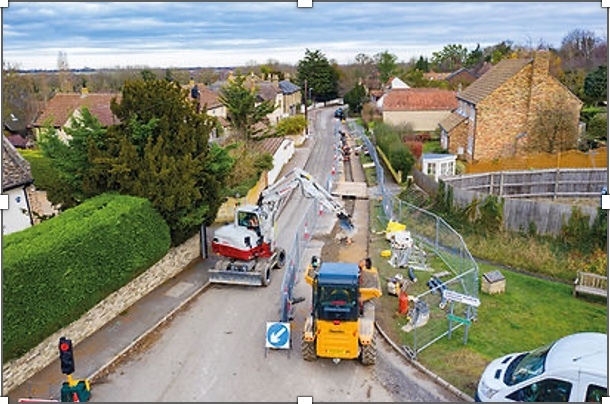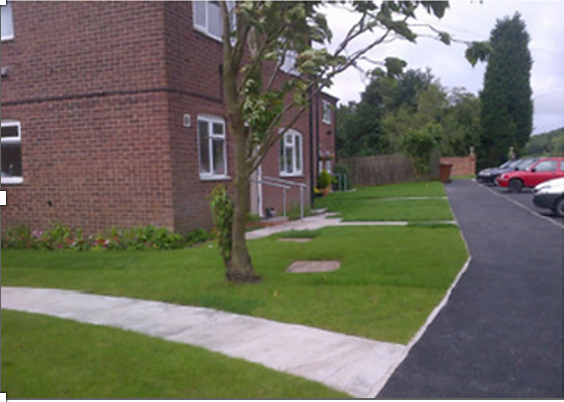Where has this been done, is it working?
Heat networks currently provide around 2% of the UK’s heating needs. Approximately 17,000 heat networks in the UK supply around 500,000 customers. Below, you can find information on a selection of existing district heat networks within the UK.
Swaffham Prior, East Cambridgeshire
Swaffham Prior is a village of around 300 homes in East Cambridgeshire, it will become one of the first villages in the UK to install a heating network into an existing community. Homes in the village aren’t connected to the gas grid and currently 70% of homes rely on burning oil for heating. This is an unsustainable, high in carbon emissions and expensive fuel source.
The Swaffham Prior Community Land Trust spearheaded the pursuit of exploring how renewable energy could be brought into the village. The ambition has been to:
- End fuel poverty
- Reduce dependence on oil
- Provide cheaper, renewable heating to as many homes as possible
In 2018, the community trust commissioned a study into alternative heating options, this was delivered by ourselves, Bioregional, and it identified the potential for a village-wide heat network. A range of heat sources were considered – including biomass from local straw – but the key to unlocking the project was a parcel of land on the edge of the village owned by Cambridgeshire County Council (CCC). This opened up the possibility of generating heat using a GSHP system.
Following a series of further technical studies funded by the Department for Business, Energy and Industrial Strategy’s Heat Network Delivery Unit, it was decided to use Ground Source and Air Source Heat Pumps to provide thermal energy, pumped through a community network, into homes in Swaffham Prior. The Air Source Heat Pumps will act as lead from mid-April to early October. They will be used all year round, but make a comparatively smaller contribution in winter with a switchover to Ground source heat pumps in the winter. Back up heating is to be provided by 1.5MW electrode boilers (effectively, large immersion heaters). Four large thermal stores have also been specified to meet short-term peaks in demand and provide resilience.
In addition, the scheme will be linked to a private electricity network connected to a 28MW solar farm owned by Cambridge County Council. The electricity generated by the solar farm that will be consumed by the Swaffham Prior network and energy centre would have otherwise been sold to the wider national grid. It is predicted that the vast majority of electricity consumed by the network will be sourced from the solar farm.
To date over half the village have already outlined their intention to join the Community Heat Network, with residents signing up to a Heat Supply Agreement, consumer protection is expected to be covered by OFGEM. This is to ensure that residents don’t pay a premium for their community supplied heat. The price of heat is linked to the price of heating oil.
The project capital costs are £11.9m, which are being funded by a £2.9m grant from the Heat Network Investment Project and capital borrowing by the council. The cost over the life of the project will be covered by heat charges and income from the Renewable Heat Incentive.
Currently, the installation of the heating mains and the construction of a local renewable energy centre is under way. It is hoped that in spring 2022, the first homes will connect to the heat network. It is predicted that there will be a gradual ramping of connections over the first five years, with a target of around 100 properties in the first 12 months.
The images below show the installation of the heat network pipes throughout Swaffham (left), and a rendering of the energy centre for the heat network (right).


Brooke Street, Derbyshire
In 2012, 18 flats were retrofitted to use a district heat network, as residents had previously complained about the high cost/poor control of the existing electric storage heaters. The heat network involved installing 3 ground source heat pump (involving 28 boreholes) to serve the 18 flats, with heat being delivered through radiators. The scheme also involved the homes being retrofitted to improve their insulation. Following installation, the residents have been very satisfied with the new system.
The images below show the lawn of a home after connection to the heat network (left), and the construction process of connecting homes to the network (right).


Kingston Heights, London
Kingston Heights is a mixed-use development, in operation since 2013, comprising of 137 apartments (56 affordable), and a 145 room Hotel within Kingston-upon-Thames. The development is heated by a district heat network, using water source heat pumps to collect ambient heat from the River Thames. Heat exchangers transfer low grade heat from river to internal ‘closed’ loop water system. The heated water can then be distributed to the apartments, which each contain a heat pump connected to a hot water cylinder, and an underfloor heating system.
The heat network saves over 500 tons of CO2 emissions per year as opposed to using a gas combined heat and power (CHP) plant.
The images below show the completed development (left), and installation of the heat network piping (right).


Wandsworth Riverside Quarter, London
Conceived in 2010, this development comprises of 550 residential units (6 blocks) and 2,973m2 of commercial space. A district heat network heats the development, which uses open loop ground source heat pumps and gas combined heat and power (CHP) to provide lower carbon heat, hot water, and electricity. The heat pumps draw water from four wells 100m deep under the site. These combine with gas boilers and CHP in the on-site energy centre. The heat is then distributed to homes via underfloor heating.
Lower cost of operation, lower carbon, and lower tariffs for residents. It is estimated that these heat pumps compared to traditional gas boilers save 132 tonnes of CO2 per year.
